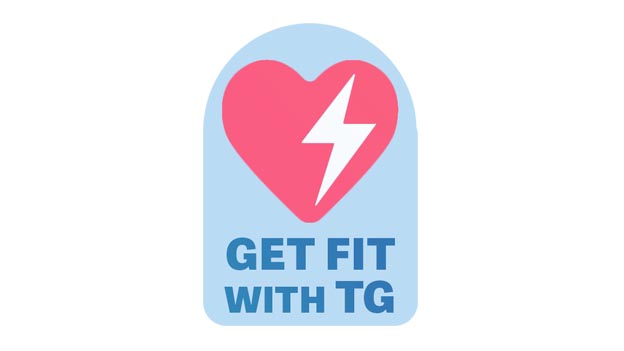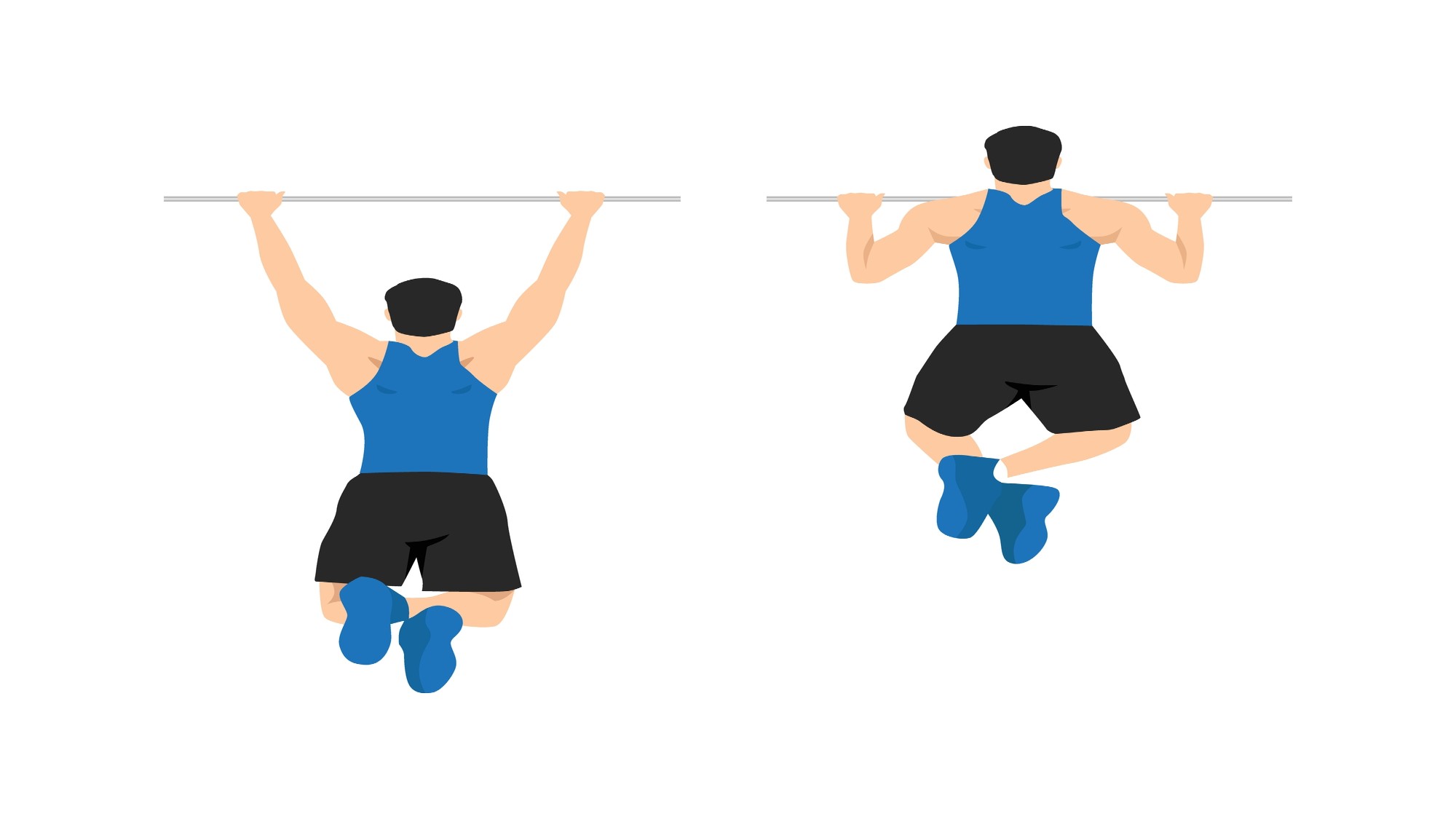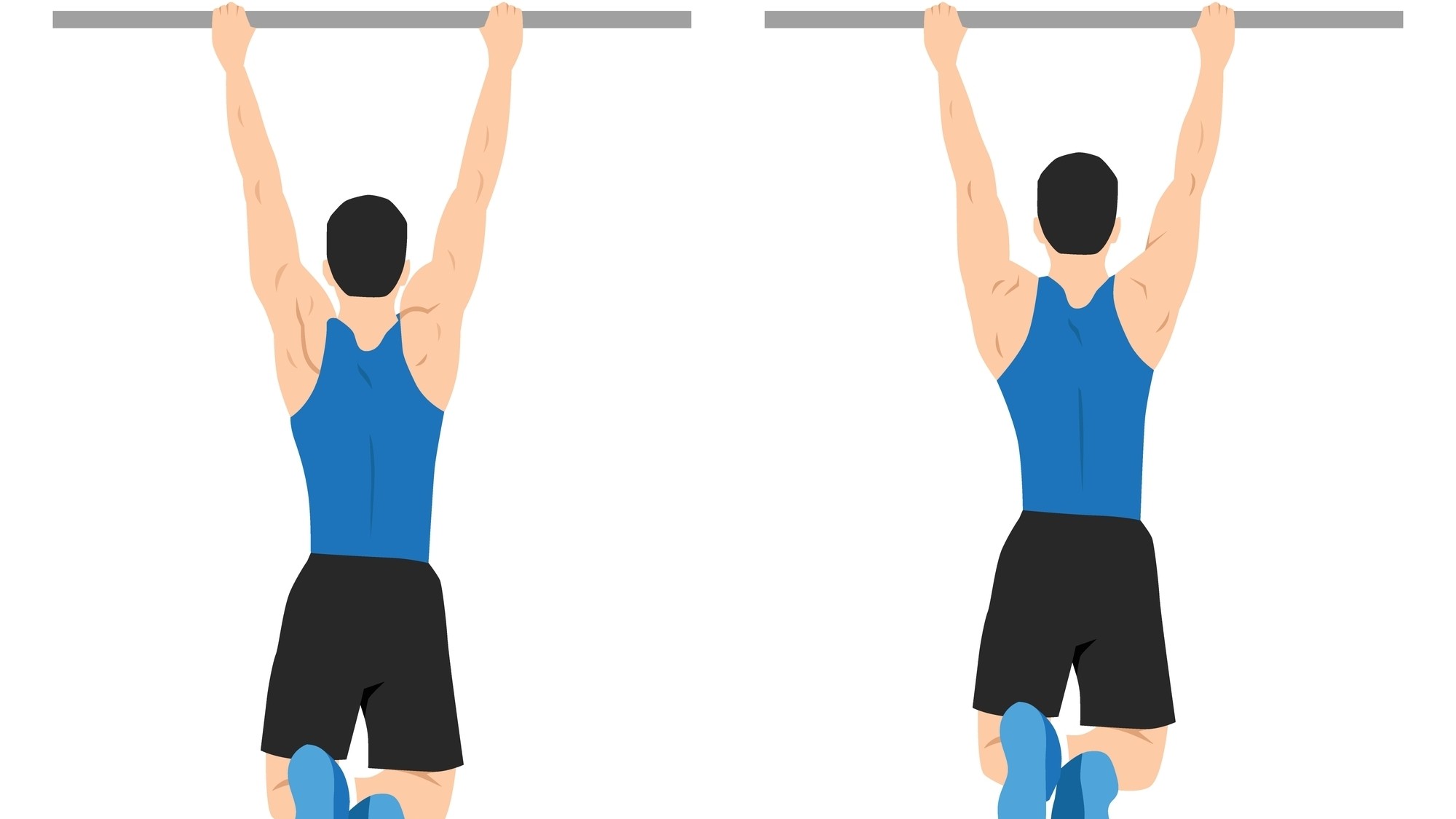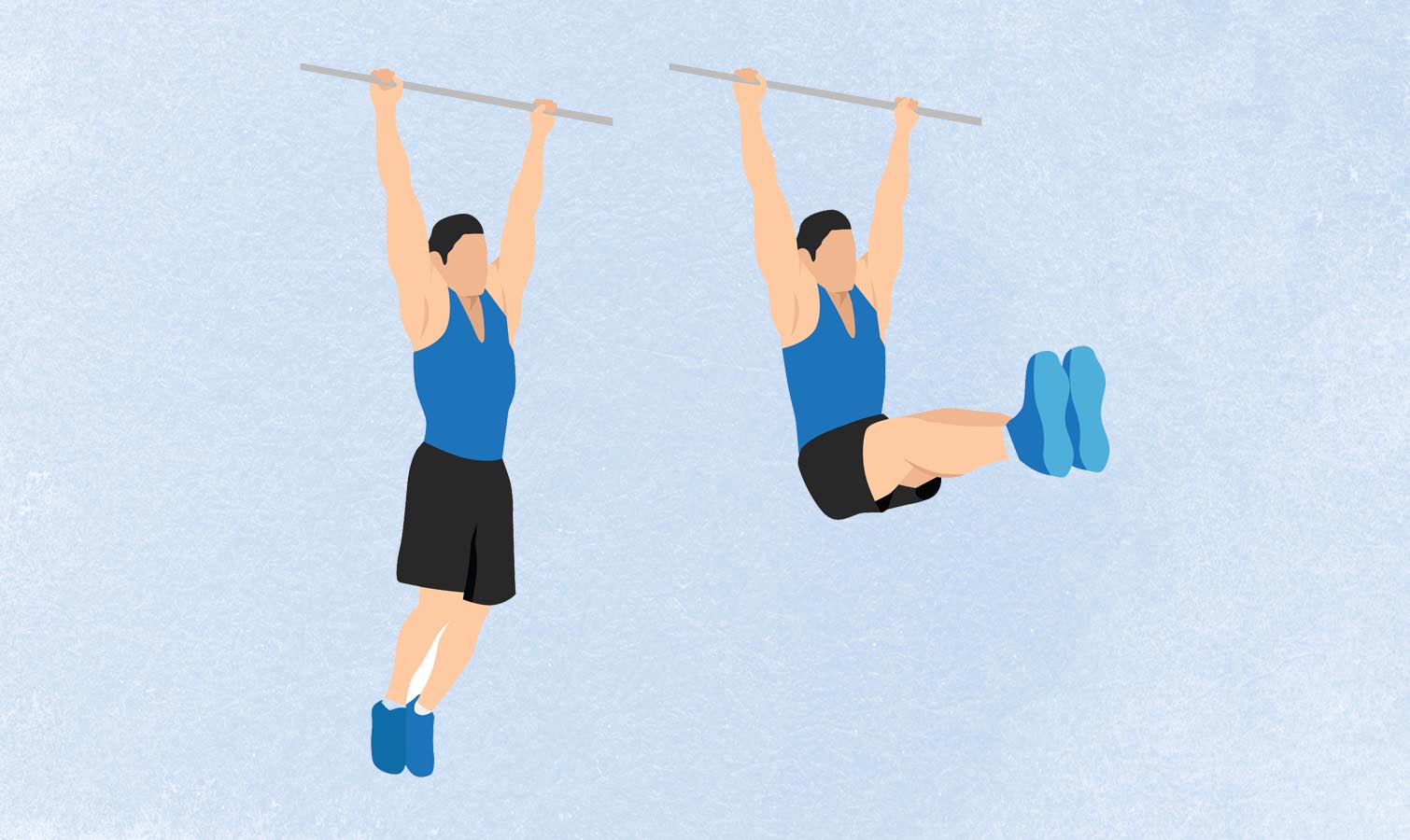
If a brand-spanking new gym membership feels like a stretch right now, you can do these five strength exercises for beginners using a pull-up bar. Build full-body strength and muscle without dumbbells, even the best kettlebells, or gym machines, anywhere you happen to be.
A pull-up bar isn’t just useful for repping out pull-ups and chin-ups, although anyone who can haul their bodyweight over a bar for multiple reps is impressive. You can use a pull-up bar for a wealth of bodyweight strength exercises, including ab workouts and upper-body calisthenics, while also working your legs.

Here on the Tom's Guide fitness desk, we're all about making 2024 your healthiest, and happiest year yet! To kick things off with a bang, we'll be bringing you a month of motivational content to help you Get Fit with Tom's Guide.
You don’t need to fix a pull-up bar to your doorframe or wall at home either (but you could), and pull-up bars aren’t just products of the gym environment. A sturdy tree branch or climbing frame are just two worthy substitutes. Here are the five strength exercises for beginners and how to do them.
What are the 5 full-body strength exercises for beginners?
The “pull” in pull-up bars tells you that these exercises will utilize the pulling motion to engage your back-body and biceps, but we’ve also thrown some core exercises into the mix and moves that engage your hip flexor muscles and legs. All in all, you can target and sculpt your entire body using the humble bar.
In my experience as a trainer, I find the back muscles hardest to fatigue using bodyweight exercises, as muscles like your latissimus dorsi (the lats), posterior deltoids (backs of the shoulders) and upper, mid and lower trapezius (traps) are muscle groups that can be fairly easy to engage but tricky to overload without weights.
But that makes the challenge of getting creative all the more fun. The beauty of a pull-up bar (or gym rings as an equivalent) is that they put your muscles through the wringer by forcing you to haul and support your weight, sometimes without the ground. These exercises tap into the bodyweight resistance training method called calisthenics, often used in CrossFit and one of the best ways to build functional strength. That said, at Tom’s Guide, we recommend using one of the best resistance bands wrapped around your bar to support one or both of your legs if you’re a beginner who needs some extra help.
Try these three simple strength exercises to build full-body strength and definition using one pull-up bar.
Get instant access to breaking news, the hottest reviews, great deals and helpful tips.
1. Pull-ups: Back and biceps

If you don’t have pull-ups in the bank or are a beginner, wrap a resistance band around your bar and place one foot or both knees through. The thicker the band, the more support you’ll get. Your biceps, lats, teres major, posterior delts, core and traps are all at work here, making for an upper-body beasting with or without help from your band.
Grip your bar using both hands and an overhand grip, and wrap your thumbs. Position your hands slightly wider than your shoulders. Contract your entire body, pull your shoulders down, then hang from the bar. Squeeze your lats, glutes and stomach, then slightly shrug your shoulders and pull up until your chin lifts above the bar. Lower back to the starting position without swinging, reset and go again.
Here’s how to do pull-ups properly if you’ve been doing pull-ups all wrong.
2. Hanging knee tucks: Full-body and abs

Knee tucks are a bridging exercise for the more advanced toes-to-bar exercise, when, as the name suggests, you’ll drive your toes up to touch the bar above your head. For this variation, start by hanging from your pull-up bar and fully wrapping your thumbs around. Keep your arms straight and stomach braced, then lift your feet from the floor. From here, drive both knees toward your chest, pause, then lower your legs again. The exercise works the upper body and core, engaging your quads, glutes, hamstrings and hip flexor muscles.
If you have toes-to-bar banked, substitute the exercise or progress to hanging leg raises first.
3. Dead hang

Dead hangs look simple but are tricky to hold over 20 seconds and brilliant for building foundational upper-body strength if you plan to work toward pull-ups. The move fires up the shoulders, arms and upper body as a whole, stretching out your back, including your lats and spine. It’s isometric, which means your muscles won’t lengthen or shorten. Like a plank, you’ll practice squeezing as many muscles as possible while holding your position. Grip the bar in an overhand position, then lift your feet away and hang from the bar, keeping your arms and legs straight. Hang for as long as you can while keeping both shoulders relaxed.
4. Scapula pull-ups: Shoulders and back

The scapula pull-up is a popular warm-up for bar work and shoulder-based workouts like the overhead press, helping to warm the arms, shoulders and upper body and activate the stabilizer muscles responsible for supporting your shoulders through movement. Scap pull-ups help train the lats, rhomboids and traps and encourage proper engagement and range of motion of the shoulder joints.
Hang from the bar, performing a dead hang as above. Reverse shrug by pulling your shoulders down and drawing your shoulder blades together, then slightly draw your shoulders toward your ears. Your arms should stay straight with a soft elbow bend, and the movement should drive from the shoulders and back. In the top position, hold briefly before lowering the body.
5. L-sit: Full-body and core

The lower back, glutes, quads, hamstrings, hip flexors, core, arms, pecs, shoulders and back can all benefit from the L-sit hold. Extending your legs away from your body at hip height also pushes your body ahead of the bar and engages the lats. Start in a dead hang position, engaging your shoulders, glutes and core muscles, then slowly lift your knees toward your chest without hunching your upper body. If you can, extend both legs away from you, squeezing your quads and keeping both legs aligned with your hips; this takes a fair whack of core strength and hip flexor engagement, so keep your knees tucked at first, if you prefer. For advanced exercises, try moving from this position into an L-sit pull-up without dropping your legs or overleaning to compensate for weaker hips.
5-move full-body pull-up bar workout for beginners
x 4-5 rounds
EMOM (Every Minute On the Minute)
- Minute 1: Pull-ups x 8-10 reps
- Minute 2: Hanging knee tucks x 10-12 reps
- Minute 3: Dead hangs x 30-50 seconds
- Minute 4: Scapula pull-ups x 10-15 reps
- Minute 5: L-sit hold x 30-50 seconds
During the first minute, perform the given reps of pull-ups, then rest for the remainder of the minute. You can scale your reps to suit your ability, but ensure you get 10-15 seconds of rest before the next minute begins. On the next minute, start your knee tucks, adjusting the reps if needed. Base your dead hangs on time, accumulating 30-50 seconds, then move to your scap pull-ups on minute four. Finish with the L-sit hold, accumulating time on the bar rather than reps. Repeat for rounds.
More from Tom's Guide
- Does yoga build muscle?
- Forget the gym, 7 bodyweight exercises that strengthen and define your entire body
- I did the 3-minute butterfly pose every day for one week, here's what happened

Sam Hopes is a level 3 qualified trainer, a level 2 Reiki practitioner and fitness editor at Tom's Guide. She is also currently undertaking her Yoga For Athletes training course.
Sam has written for various fitness brands and websites over the years and has experience across brands at Future, such as Live Science, Fit&Well, Coach, and T3.
Having coached at fitness studios like F45 and Virgin Active and personal trained, Sam now primarily teaches outdoor bootcamps, bodyweight, calisthenics and kettlebells.
She also coaches mobility and flexibility classes several times a week and believes that true strength comes from a holistic approach to training your body.
Sam has completed two mixed doubles Hyrox competitions in London and the Netherlands and finished her first doubles attempt in 1:11.
